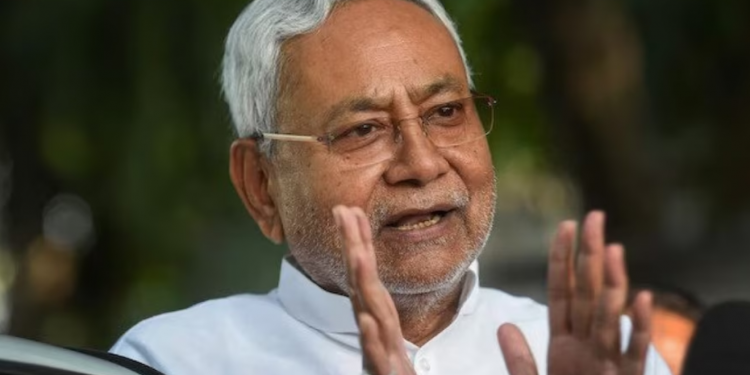Nitish Kumar has done it yet again. The JD(U) leader took oath for a record ninth time as the Chief Minister of Bihar along with the BJP’s Samrat Chowdhury and Vijay Sinha as ministers, Sunday. This is the fourth time in the last eleven years that the Bihar Chief Minister, once known as ‘Susashan Babu’, has changed alliances, something that has gradually dented his image and earned him the moniker ‘Paltu-Ram.’ These developments have also harmed the prospects of the JD(U) which has been constantly losing seats in the Bihar Assembly. The party had won 115 out of 243 seats in 2010 Assembly polls, which reduced to 71 in 2015 and 43 in 2020.
Nitish had first left the 17-year-old alliance with the BJP in 2013 when the saffron party named Narendra Modi as its prime ministerial candidate for the 2014 Lok Sabha polls and joined hands with the Congress and the Rashtriya Janata Dal (RJD) of Lalu Prasad Yadav, who was once his bête noire. The JD(U) again returned to the NDA camp in 2017 following corruption taint on his then deputy Tejashwi Yadav. Five years later, he was once again in the Grand Alliance, which also had three Left parties this time apart from the Congress and the RJD. This means in the last five years itself, Nitish has swapped alliances thrice. After this, Union Home Minister and BJP leader Amit Shah had announced that the BJP’s door was closed forever for Nitish Kumar and called him ‘Aaya Ram Gaya Ram’ (turncoat). Even Nitish Kumar had said on record that he “would rather die than join hands with the BJP.” However, the old saying that there are no permanent ‘bed fellows’ in politics holds true for someone like Nitish even today.
After snapping ties with the RJD for the second time, Nitish said: “I was facing difficulties in working with this alliance. When I explained this to party members, they advised me to resign.” On the Opposition INDIA bloc, Nitish said: “I have been working hard to make a successful, meaningful (INDIA) alliance, but no one else (in the alliance) has been doing anything…”
Irrespective of the fading popularity of Nitish Kumar among the voters of Bihar, his exit from the INDIA alliance may not be seen as a setback for the Opposition which is going to face the ruling BJP in the Lok Sabha elections due this April-May. Nitish abandonment comes at a time when the Mamata Banerjee-led Trinamool Congress and the Arvind Kejriwal-led Aam Aadmi Party have declared that they would have no seat-sharing arrangement with the Congress for the Lok Sabha polls in West Bengal and Punjab, respectively. Nitish Kumar, who organised meetings for the INDIA bloc, was viewed by the Opposition to be a fierce fighter against the BJP until the very end. However, a sudden change in his stance at this critical juncture may not damage the bloc as would normally be viewed. This may make the BJP’s argument that the Opposition bloc is an unsteady coalition more shrill but credibility of Nitish will nullify anything positive that could be read into his constant acts of changing sides.
Rather, the BJP may have some explanation to do about its reasons for accepting, back in its fold, this Aya Gaya Ram who may again dump the party after the 2024 elections. The obvious reason could be that Bihar sends 40 MPs to the Lok Sabha and the JD(U)-RJD-Congress combine was appearing formidable to the BJP. That is why despite, some state BJP leaders opposing the idea of accepting Nitish Kumar back again, the party’s central leadership may have given their approval to this decision after considering the broader perspective. In reality, the BJP had notched up the best possible number of Lok Sabha seats that it can in the Northern states after Pulwama in 2019. A better performance may not be possible this time through as politics and aspirations of people have changed, economy has deteriorated and even the Ram temple has not really caught the imagination of the youth of India to the extent as had been hoped for. Taking Nitish back may seem strategically wise but the acceptance also shows a weak underbelly.






































